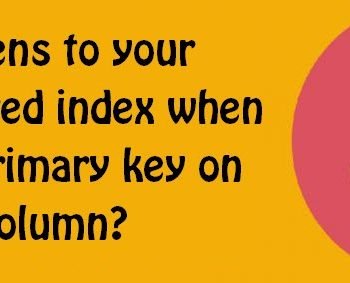 In the world of databases, performance is king. Efficient retrieval of data is crucial for the smooth operation of any application. MySQL enhances its performance through an optimization technique called Index Condition Pushdown (ICP). Let’s delve into the depths of ICP and understand how it boosts MySQL’s efficiency.
In the world of databases, performance is king. Efficient retrieval of data is crucial for the smooth operation of any application. MySQL enhances its performance through an optimization technique called Index Condition Pushdown (ICP). Let’s delve into the depths of ICP and understand how it boosts MySQL’s efficiency.
Understanding Index Condition Pushdown (ICP)
ICP is an optimization for instances where MySQL retrieves rows from a table using an index. Without ICP, the storage engine traverses the index to locate rows in the base table and returns them to the MySQL server, which then evaluates the WHERE condition for the rows.
However, with ICP, if parts of the WHERE condition can be evaluated using only columns from the index, this part of the WHERE condition is pushed down to the storage engine. The storage engine then evaluates the pushed index condition using the index entry, and only if this is satisfied is the row read from the table. As a result, ICP can reduce the number of times the storage engine must access the base table and the number of times the MySQL server must access the storage engine.
How does ICP work?
When Index Condition Pushdown is not used, an index scan proceeds as follows:
- The next row is obtained, first by reading the index tuple and then by using the index tuple to locate and read the full table row.
- The part of the
WHEREcondition that applies to this table is tested. The row is accepted or rejected based on the test result.
With ICP, the scan proceeds a bit differently:
- The next row’s index tuple is obtained, not the full table.
- The part of the
WHEREcondition that applies to this table and can be checked using only index columns is tested. If the condition is unsatisfied, the process proceeds to the index tuple for the next row. - If the condition is satisfied, the index tuple reads the full table row.
Why is ICP beneficial?
The primary benefit of ICP is efficiency. By reducing the number of times the storage engine must access the base table and the number of times the MySQL server must access the storage engine, ICP can significantly reduce I/O operations. This makes retrieving data faster and more efficient, leading to a boost in overall performance.
With the ever-increasing volume of data that applications have to handle, such optimizations are becoming increasingly crucial. By understanding and effectively using techniques like ICP, we can ensure that our databases perform at their absolute best, providing users with a smooth and seamless experience.
When Does Index Condition Pushdown Help?
This optimization provides the greatest benefit on queries against large InnoDB tables where the pushed condition eliminates many rows. By avoiding heavy row lookups, response time can improve dramatically.
For example, consider a query filtering on a ‘state’ column index:
SELECT * FROM customers WHERE state = 'CA';
Without ICP, MySQL would locate ‘CA’ rows using the index but retrieve all of them since it can’t apply the condition at that level. This results in lots of extra I/O to fetch non-matching rows.
With ICP enabled, MySQL pushes the ‘state = CA’ condition down to InnoDB. This allows InnoDB to only retrieve rows where the index value meets that condition, avoiding wasted I/O.
The benefits scale as the table and filtering ratio grow. Index condition pushdown can produce huge speedups on large tables where the index filters out many rows.
Wrapping Up
Index Condition Pushdown is a powerful tool in MySQL’s optimization toolkit. By allowing the storage engine to evaluate part of the WHERE condition, ICP can reduce unnecessary I/O operations and increase the efficiency of data retrieval. Whether you’re a database administrator seeking to optimize your database or a developer eager to understand the internals of MySQL, understanding ICP is invaluable.
Reference: Pinal Dave (https://blog.sqlauthority.com)





